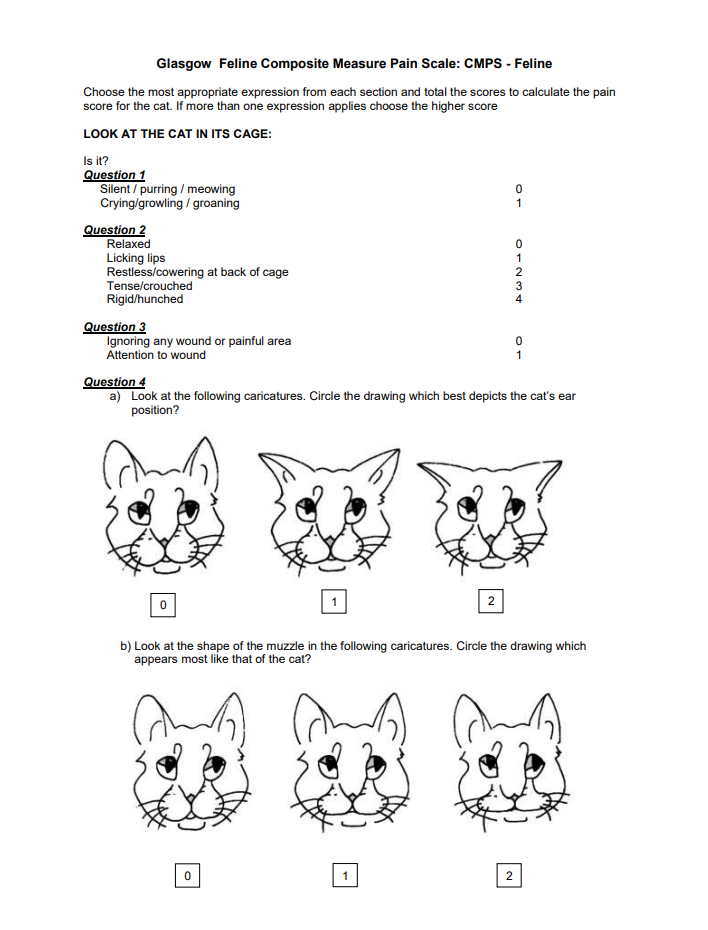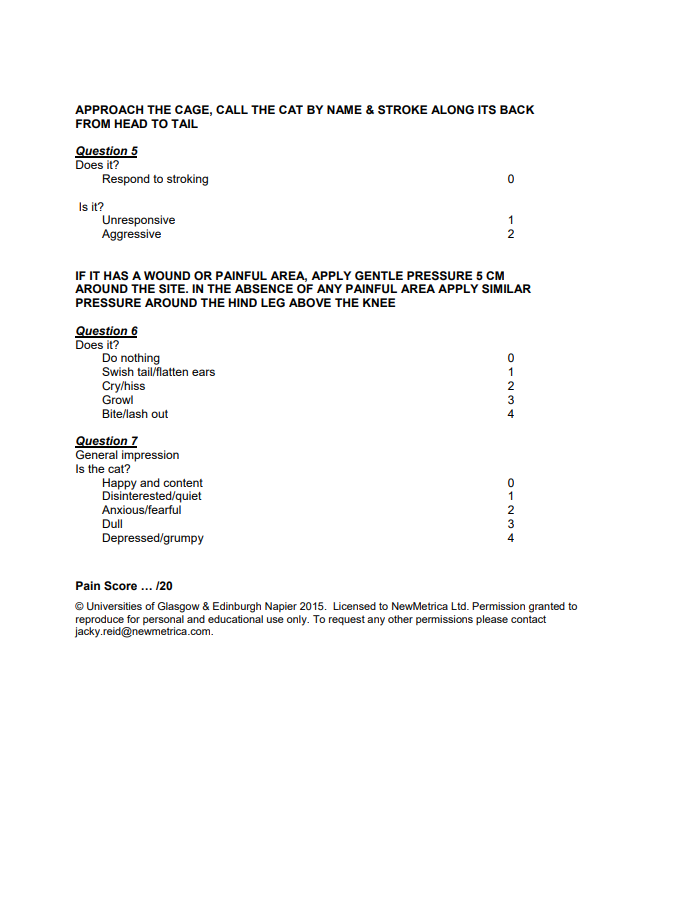Cat Tales - Poor Painful Purr-less Pets
Cats pose a significant challenge when it comes to diagnosing and managing pain. What are the symptoms of a sad cat, and what should you do to help your kitty stay healthy and happy?
Cats don’t talk.
Yes, they are communicative and expressive creatures, and the deep thrumming of a purring kitty can certainly tell us something, just as a sudden lap invasion or meowing by the food bowl can help us divine a cat’s desires, but: they cannot actually speak.
From the standpoint of identifying when a cat may be feeling unwell, or may specifically be in pain, it can be extremely difficult to correctly identify how a cat feels. Are they sitting still with their eyes slitted closed because they are resting comfortably? Or are they frozen in place due to joint pain? Is the cat below relaxed, or suffering?

In humans old enough to speak, diagnosing pain and discomfort is typically accomplished using a scale, with zero as “no pain” and the upper end as unendurable pain. How can we accomplish something similar for cats?
Happily, a good deal of research has been done trying to identify physical signifiers that indicate pain in a cat. While it is true that some physiological symptoms can go hand in hand (shallow breaths, elevated heart-rate, etc.) with pain, these can also be present in a cat experiencing emotional stress (due to being at the Vet’s, say…)
The solution is what is known as a Grimace Scale: like us, kitties tend to tense up when in pain. This leads to changes in facial expression, specifically in the area of the mouth and whiskers, the eyes, and the ears. Multiple Grimace Scales have been created in the past, but the best are ones that have been validated with testing on cats before and after treatment and pain management.
Below is a copy of the Glasgow Feline Composite Measure Pain Scale. It has multiple questions about behavior, (some very obvious, such as crying/growling/groaning) including drawings that indicate a cat’s facial expressions when tense. By answering the questions and adding the total, it is possible to approximate an idea of a cat’s pain level. In particular, look at the sketches of facial expression. (There is also a newer version of a Grimace Scale with clearer drawings and accompanying photos here. The images are not included in this post because we don’t have reproduction rights for educational purposes.) Signs associated with pain can be:
- A compressed, tightened mouth, with whiskers more stiff than drooping.
- Ears rotated to the side and flattened towards the side or back of the head.
- Eyes closed or only partially open, even when clearly awake.
So, if your cat is squinting, with flattened ears, and their mouth seems tight with the whiskers more straight than drooping, what should you do, if those are all indicators of pain?
Well, it is first useful to look at other indicators (including those from the Glasgow scale.) Is their behavior otherwise normal? Are they moving, climbing and jumping like normal? Are they responding to offers of food and treats? If not, it may be time for a visit to the vet’s office.
It is especially important to emphasize that you should NEVER give your cat over the counter pain medications (analgesics) meant for humans. Several common painkillers can be fatal in very small doses for felines.
Common mistakes when it comes to pain management for post-surgery and chronic diseases in cats are the obvious ones: typically, people forget to give the required medications on a regular basis as prescribed, or they misinterpret their cat’s behavior as indicating they no longer need pain medication (because the cat is in less pain due to the medication.) If you have any concerns that your cat is over medicated or is suffering unexpected side effects, contact your feline vet immediately.
And as always, remember that the staff at Abbeywood Cat Hospital is here to help keep your cat healthy so they can be happy!

